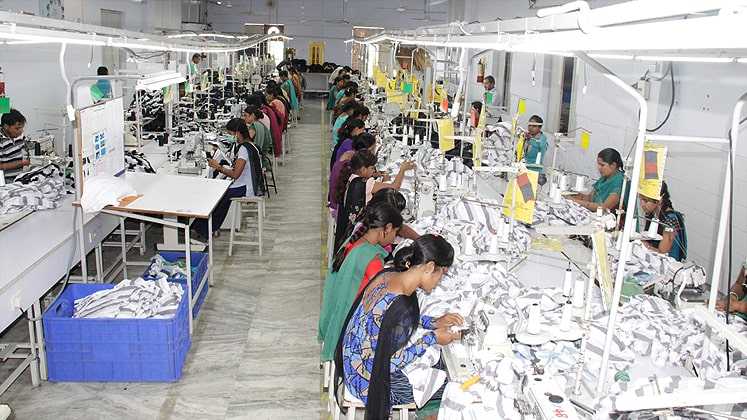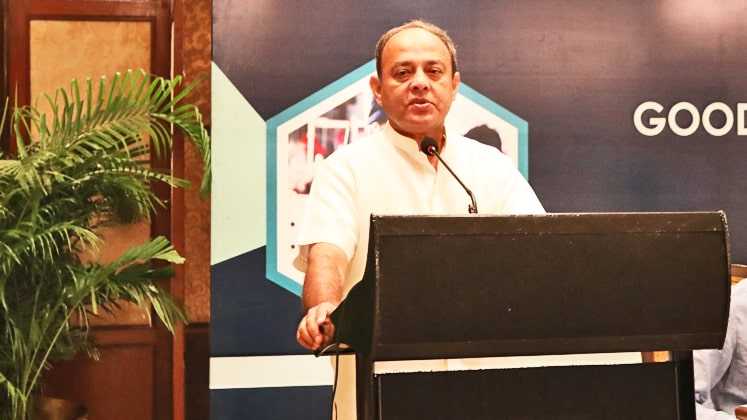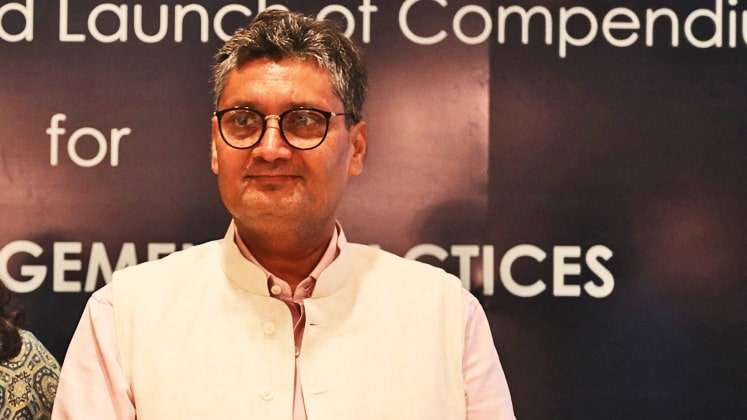
Apparel export industry is passing through a tough time and industry representatives have been knocking the Government’s door time and again in this regard. So, it becomes highly important to know the suggestion of bureaucrats, policymakers and experts who are instrumental in the decision-making process. Apparel Resources brings to you the views of such top officials who were recently spotted in a seminar of the apparel industry.
Ravi Capoor, Secretary (Textiles), Ministry of Textiles

We are mostly into cotton-based apparels and are also fighting with the competitor countries which are among the least developed, poorest countries in the world and have the cheapest labour. So, it is increasingly important to adopt best manufacturing practices. We must keep in mind that ‘Good HR Practices’ lead to higher productivity.
Looking at the macro picture that we have major disadvantages in terms of entry barrier to our larger markets like Europe, while our competitors avail benefits of FTAs, zero duty, there is actually a whole maze of things which together work towards competitiveness.
Now the time has also come when the industry has to move towards higher value-addition products. As we see, we are still a two-season player in the globe. We don’t produce much high-value products and we are still into cotton products; hence, we need to move into that space where margins are higher.
The industry should focus on newer markets. A huge amount of buying is done by these emerging markets, but we (industry) somehow have hesitation to enter such markets. Our Ministry has in fact identified 12 such destinations across the globe, which are buying garments worth more than US $ 120 billion but Indians are not much strong in these markets. So, apart from continuous focus on our existing main markets, we need to venture into the newer and non-traditional markets in a big way.
Looking at the international scenario, incentives can only work up to a point, but beyond that, we have to look at the competitiveness of the industry. Every time we talk about competitiveness, we want Government to reduce taxes. Yes, we do have high transactional cost, high-interest cost, but are we overlooking the issue of productivity? I have seen Vietnamese factories closely in one of my previous portfolios (as Joint Secretary, Commerce Ministry, handling ASEAN). The workers of Vietnam have two times higher productivity than Indian workers. I have experienced there much enthusiastic results of training and productivity particularly in the garment sector. Why this particular angle of competitiveness is overlooked by us? We are not really working towards increasing the productivity of our labour. I think we need to move to high level of skilling. The wage in Vietnam is high compared to India but it doesn’t appear to be so (or doesn’t have its impact) as their productivity is high and it is a win-win situation is for all.
For us, overall interest cost seems to remain high (despite interest subvention kinds of schemes, etc.), but transactional costs are gradually going down; ease of doing business is increasing but there are issues because of which manufacturers need to focus on the factors that are in their hands.
Somehow, our industry has been caught in the trap of 4 to 5 per cent of the global market and has not been able to move out of that. Bangladesh and Vietnam’s rate of growth is much higher than ours, so there is something fundamental which we need to address and quickly.
Government is there to support and is working on various suggestions of the industry. We are exploring how we can provide more infrastructural support.
Sudhir Garg, Joint Secretary, Ministry of Micro, Small & Medium Enterprises

All manufacturers should adopt lean implementation seriously so that they can achieve the required improvements. Secondly, we have to see our manpower differently and provide proper skills to them. This happens when we involve researchers and experts in our whole system. Many times, we think that we don’t need anybody’s help in our business but coordinating with other people and working together is key for development. The industry also has to understand that social and economic profit can go hand in hand.
Information Technology is integral to success today and manufacturers need to explore how much they are into digital space or the extent to which they are using IT in their overall operations. We know very well that margins are thin in manufacturing, so with the use of IT, we can retain margin. We have to join hands to create innovative brands. E-commerce has a lot of opportunities and is shaping up differently. We have to encash upon this booming domain as branding becomes comparatively easy with the help of e-commerce. If we look at this comprehensively, we can become part of the larger margin area and move from the present thin margin.
AEPC can establish the Common Facility Centre for knowledge sharing with the industry so that manufacturers gain profit in a better way and create value for everybody.
Ajay Shankar, Former Secretary, Department of Industrial Policy and Promotion (DIPP)
Yes, there is lack of growth in apparel exports and if we look at the situation at the micro-level, India should not be exporting raw cotton or fabric. Our export should only be of RMG mainly.
The issue of real exchange rate could not get enough attention. India has seen a real exchange rate of appreciation of about 20 per cent in last 6-7 years. It is equalling to the lowering of import duty by 20 per cent, which is like a negative import duty for many sectors now. This imbalances the potential of competitive advantage wherever value addition is large. We need to therefore change the common perception that strong Rupee is a sign of a strong economy. The East Asian experience is the exact opposite and they realise that weak currency leads to more production and more jobs. Here I am not arguing about artificial depreciation.
There is a need for putting the workers in the centre of productivity and competitiveness. On the basis of my experience and keeping a close watch on the industry, I must say that we should have workers’ colonies or their decent housing nearby to the factories so that they can commute easily and don’t face fatigue while doing their work. If workers have to travel a lot (no matter even in company’s bus), it will have an impact on their productivity. This is like a paradigm shift. Though industry and private builders may not come forward for this, the Government has to proactively support on this point by building apparel or textile parks.
I must appreciate that in hubs like Bengaluru, factories are moving to remote areas and near to workers’ houses, but we can’t say how rapidly all this will be scaled up. We should target to match global scale in this regard.
States like Bihar can offer complete infrastructure free of cost to prospective investors or talented apparel professionals willing to become entrepreneurs for some time and if entrepreneurs succeed, they should pay otherwise they can leave. This kind of plug and play will encourage start-ups to invest in apparel manufacturing in states where the industry is currently not much developed.

Leave a Reply